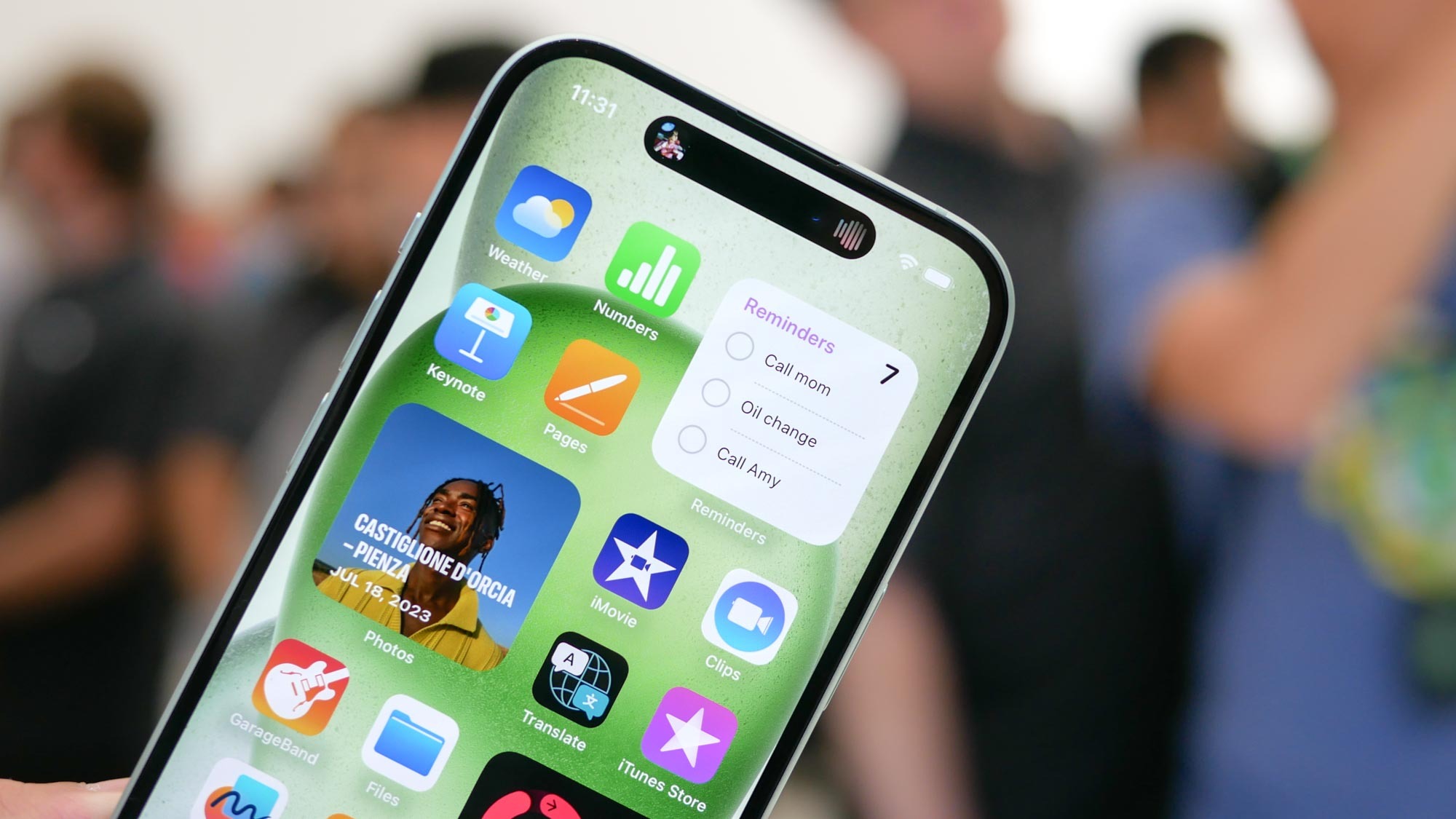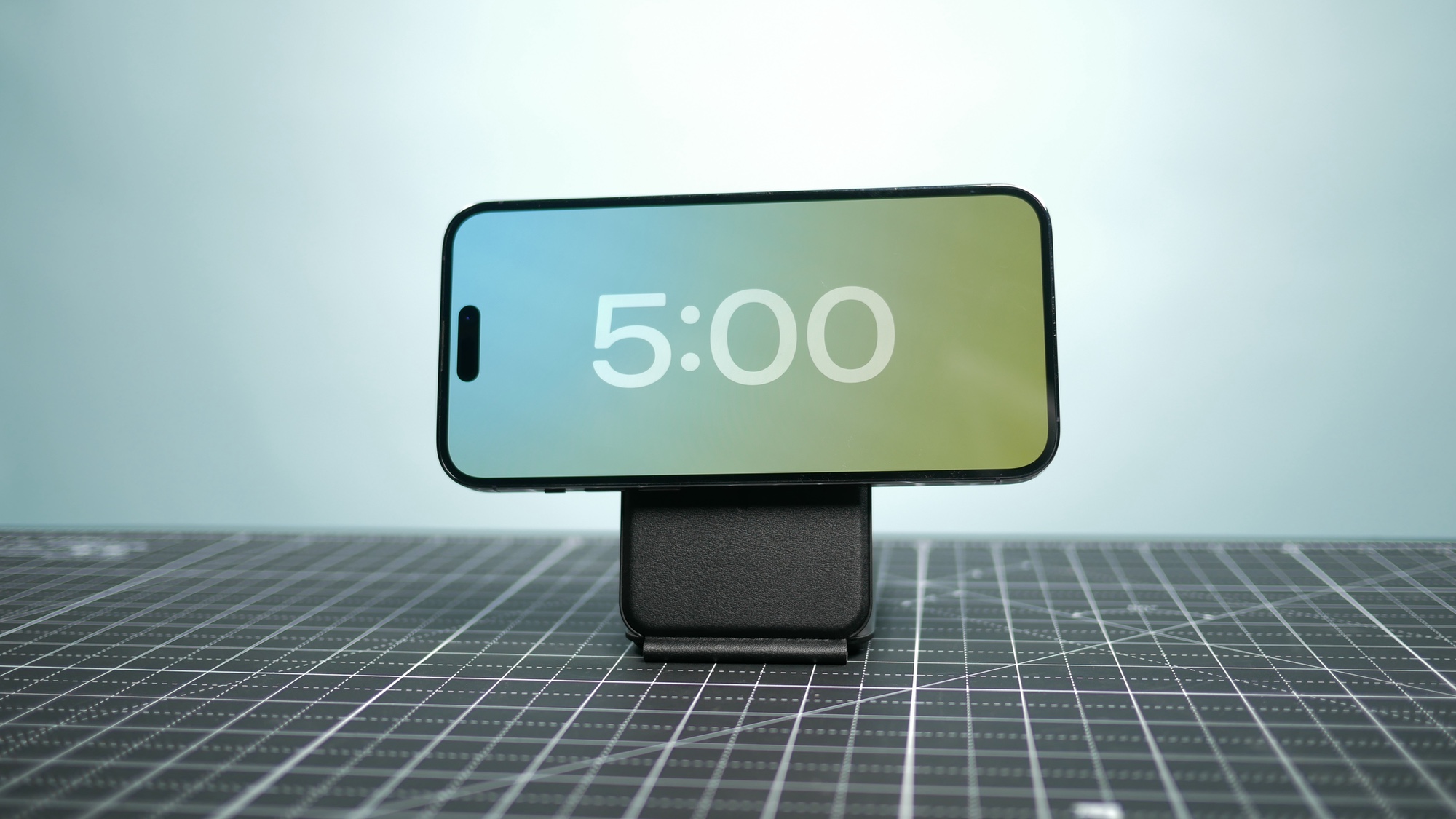The iPhone 15 is my favorite new iPhone — but it's missing two big things
There's a lot to like but a couple of misses

Of all the iPhone models introduced at Apple's fall event, the iPhone 15 stands out as the best, at least to my eye. I realize it's not supposed to be that way — I'm supposed to be wowed by the premium features Apple packed into the iPhone 15 Pro or swayed by the improved telephoto lens of the iPhone 15 Pro Max.
And while those Pro iPhones seem like best phone contenders, they're still not the one I would get.
No, it's iPhone 15 all the way for me, thanks in large part to Apple adopting many of the best features introduced in the iPhone 14 Pro and putting them in a less expensive phone. The iPhone 15 may not be breaking new ground with a lot of this year's enhancements, but it's delivering them for a lot less than what you would have paid a year ago.
My colleague John Velasco said it best in his iPhone 15 hands-on — this model delivers flagship specs at a midrange price. And that's something that's always going to please my inner cheapskate — the promise of getting more for less.
That said, the iPhone 15's not perfect. I can think of at least two big misses where Apple dropped the ball. Maybe it's not enough to keep most people from upgrading, but it would certainly give me pause before mashing the Buy button.
What's so good about the iPhone 15

Before we bury the iPhone 15, let's come to praise it first. After all, there's a lot to like about this phone.
The iPhone 15 leaves behind the 12MP main camera the iPhone's been using since the days of the iPhone 6s, grabbing a 48MP sensor that's going to mean more detailed shots. That's true even if you shoot at the 24MP default, too.
Get instant access to breaking news, the hottest reviews, great deals and helpful tips.
And with a 48MP camera you can take a 2x zoom shot at 12MP resolution and get a picture that's not only close up but free of the noise and blur that can often crop up in digital zooms. It's no dedicated telephoto lens, but it's a pretty good substitute.
All the computational photography improvements found in other iPhone 15 models are on display here — the improvements to Smart HDR for more detailed shot in demanding lighting conditions, the better colors and richer details promised for the updated Portrait and Night modes and the ability to automatically switch to portrait mode when a person's in the frame.
The notch on the iPhone's display is gone, replaced once and for all by the Dynamic Island cutout. And that means iPhone 15 owners will also get to experience Live Activities via Dynamic Island, so that alerts appear in an engaging manner.
"But Phil, weren't those features available last year on the iPhone 14 Pro?" you're asking. "Why celebrate the arrival features that are already a year old?" The answers to your questions are, in order, yes and who cares. It certainly doesn't matter to me when a great feature happens to arrive on a phone, but the fact the phone it's now arrived on starts at $200 less than the one I might be considering? That part matters very much.
Throw in some other features like a USB-C port and curved edges while keeping the starting price at $799, and you're talking about a very compelling upgrade. Or at least you are until we get to the missing features.
Stop using different chipsets, Apple

A couple weeks back, I wrote about how Apple was likely to repeat the same mistake with the iPhone 15 that it made with the iPhone 14 — namely, using new silicon for the Pro models while leaving a hand-me-down chipset for the standard iPhone. Indeed, that's exactly what happened, as the iPhone 15 Pro models sport a brand new A17 Pro chip and the iPhone 15 inherits the A16 Bionic from the iPhone 14 Pro.
So why does it bug me that the iPhone 15 is using last year's Pro chipset while I'm not at bothered about the phone using last year's Pro main camera? Because chipsets are different, and using one kind of silicon in your standard flagship and another kind in a different model creates a confusing have-and-have-nots situation. As I pointed out before, Samsung and Google don't do this with their flagships, so I'm baffled as to why Apple does.
iPhone 15 owners don't even get the benefit of having a modestly upgraded version of last year's silicon like iPhone 14 shoppers got. Near as I can figure, the A16 Bionic inside the iPhone 15 will be unchanged from the version that powered the iPhone 14 Pro. That's not necessarily a bad thing, as the A16 outperformed many an Android phone (though it did lag in some graphics testing). But Android phone makers aren't standing still, and we could see many upcoming devices turn to the Snapdragon 8 Gen 3 in order to narrow the performance gap with Apple even further.
The always-on conundrum

The iPhone 15 is also missing support for an always-on display (AOD), another feature added with last year's iPhone 14 Pro update. Normally, I'd shrug and chalk this up to one of those features you restrict to a Pro model phone to differentiate it from other devices. But then StandBy Mode came along.
StandBy Mode is one of the big changes coming via iOS 17, which becomes available as a full download today (September 18). When your phone is horizontally oriented as you charge it, StandBy Mode will kick into gear, turning the iPhone display into a smart screen. You can have the phone show off a clock face, different widgets or even a slideshow of your favorite photos.
If you have an iPhone with an always-on display — basically any Pro model released in 2022 and later — StandBy Mode stays on constantly. On other iPhones, though, it times out after about 20 seconds of inactivity, and your phone goes to sleep. I can tell you from my iOS 17 hands-on testing that this severely diminishes the usefulness of StandBy Mode. And I imagine it would feel especially annoying on a phone I had just bought.
I understand there are likely hardware reasons for StandBy Mode working best with phones that have AOD support. And it's equally likely that equipping iPhones with AOD-friendly displays might drive up the cost of the device. At any rate, I hope Apple comes up with some sort of software-based workaround, because StandBy Mode is pretty cool feature that should be enjoyed by more people — even those without an iPhone Pro.
iPhone 15 outlook
Like I said at the start, a still solid A16 Bionic chipset and a lack of AOD support are not necessarily the sort of things that keep people from upgrading to a new phone. Our iPhone 15 verdict is still pending, but it sounds like if you upgrade to the iPhone 15, you're going to wind up with a pretty complete device. But "pretty" complete is not the same thing as "entirely" complete, and I think iPhone 15 users may notice the difference sooner rather than later.
More from Tom's Guide
- iPhone 15 — 6 reasons to buy and 3 to skip
- iPhone 15 USB-C is a big disappointment — here’s why
- iPhone 15 vs. iPhone 15 Pro: All the biggest differences
Philip Michaels is a Managing Editor at Tom's Guide. He's been covering personal technology since 1999 and was in the building when Steve Jobs showed off the iPhone for the first time. He's been evaluating smartphones since that first iPhone debuted in 2007, and he's been following phone carriers and smartphone plans since 2015. He has strong opinions about Apple, the Oakland Athletics, old movies and proper butchery techniques. Follow him at @PhilipMichaels.

